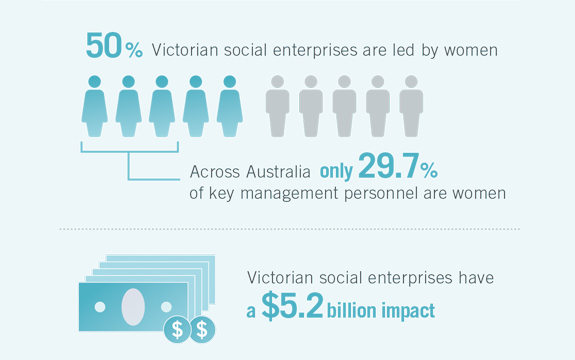Taking care of business

In Summary
This article originally featured in Swinburne's Research Impact magazine.
Businesses established for the benefit of the community, known as social enterprises, contributed $5.2 billion to the Victorian economy in 2017. They also employed marginalised people in far higher numbers than other business categories according to a policy-shaping 2017 Swinburne report.
The Map for Impact report was commissioned by the Victorian government and led by Professor Jo Barraket, Director of the Centre for Social Impact at Swinburne. It found that social enterprises have created 60,000 jobs, more than 30% of which are held by people from marginalised groups.
Marginalised people, defined as having less access to material and social resources, including those with disabilities, the long-term unemployed, people that are culturally and linguistically diverse, and Indigenous Australians, among others. In the broader workforce, marginalised people are thought to represent roughly 24% of employees.
“The thing that really stood out was the inclusive nature of employment by social enterprises,” said Barraket. “Nearly half of social enterprises are led or managed by women.” By contrast, across Australia, only just over 29% of key management positions are held by females. In addition, she said, “about 19% of staff in Victorian social enterprises are people with a disability”. In Victoria, roughly 10% of the workforce have a disability.
Barraket’s team also produced an interactive online map of Victoria’s 3500 diverse social enterprises as an ongoing resource. By doing that they could see that many enterprises worked directly in the area of employment. “For pretty much any social group in Australia that faces an equity issue in regards to work, there will be a social enterprise trying to solve that equity issue,” said Barraket.
However, the scope of social enterprises was also broad — they provided vital services, such as post offices, pharmacies, and even theatres, not offered by the market or government in remote areas. According to Barraket, a newer type of social enterprise also provided environmental products, such as electricity from Hepburn Wind, a community-owned wind farm 100 km from Melbourne.
Social enterprises have been a growing part of the Victorian economy since the state government established favourable policies in the 2000s. At the time of the report, more than 50% of enterprises had been set up in the preceding five years, Barraket pointed out, and the market has been increasing in sophistication. “We are also now seeing growth in social enterprises using things like virtual reality platforms, which involve people with physical disability in the design of products such as prostheses.”
Strong backing by the state continues, and the Victorian government announced its first Social Enterprise Strategy in 2017, referencing Barraket’s findings.
The $10.8 million dollar strategy has called for greater coordination across government to support these initiatives.

